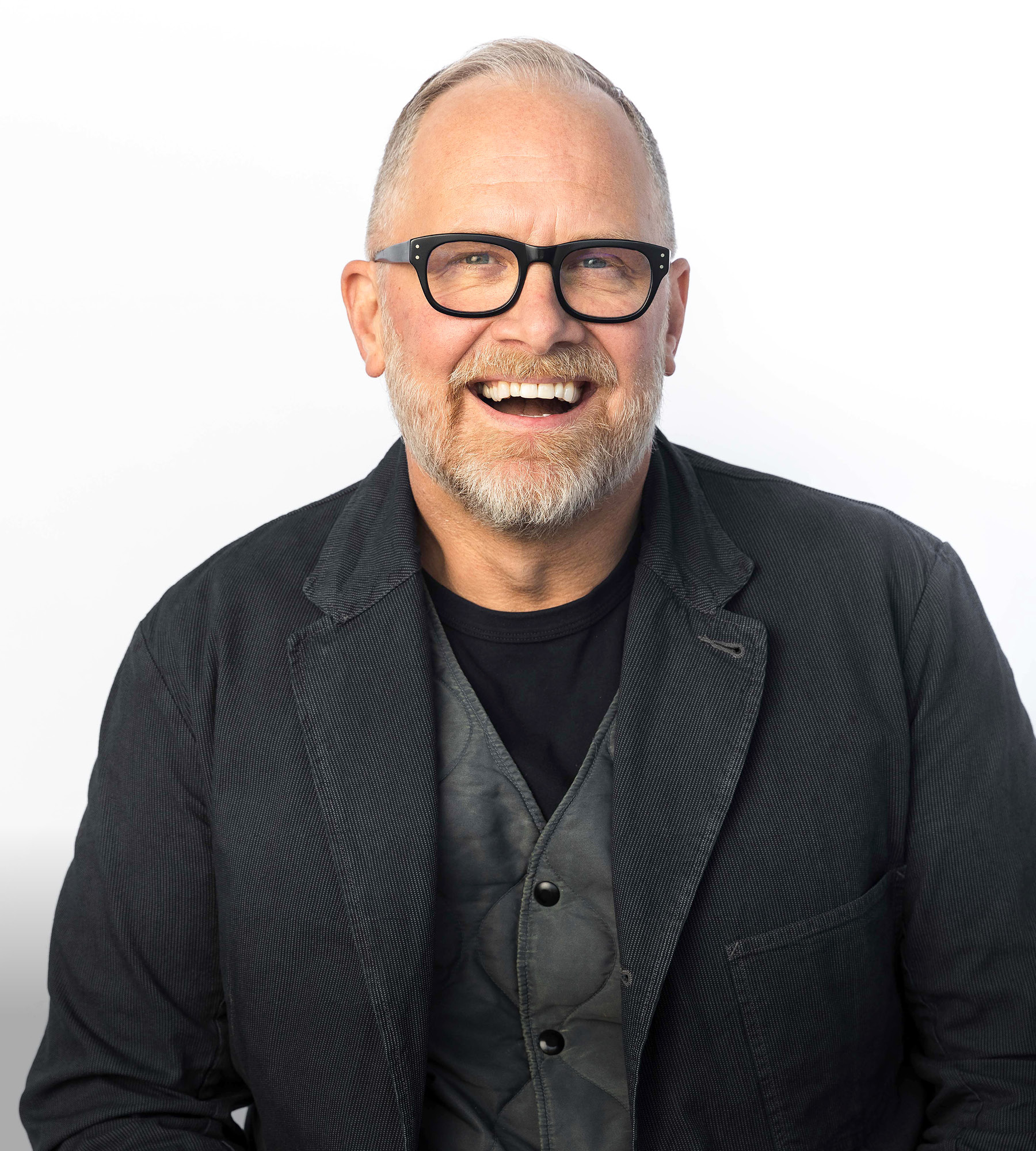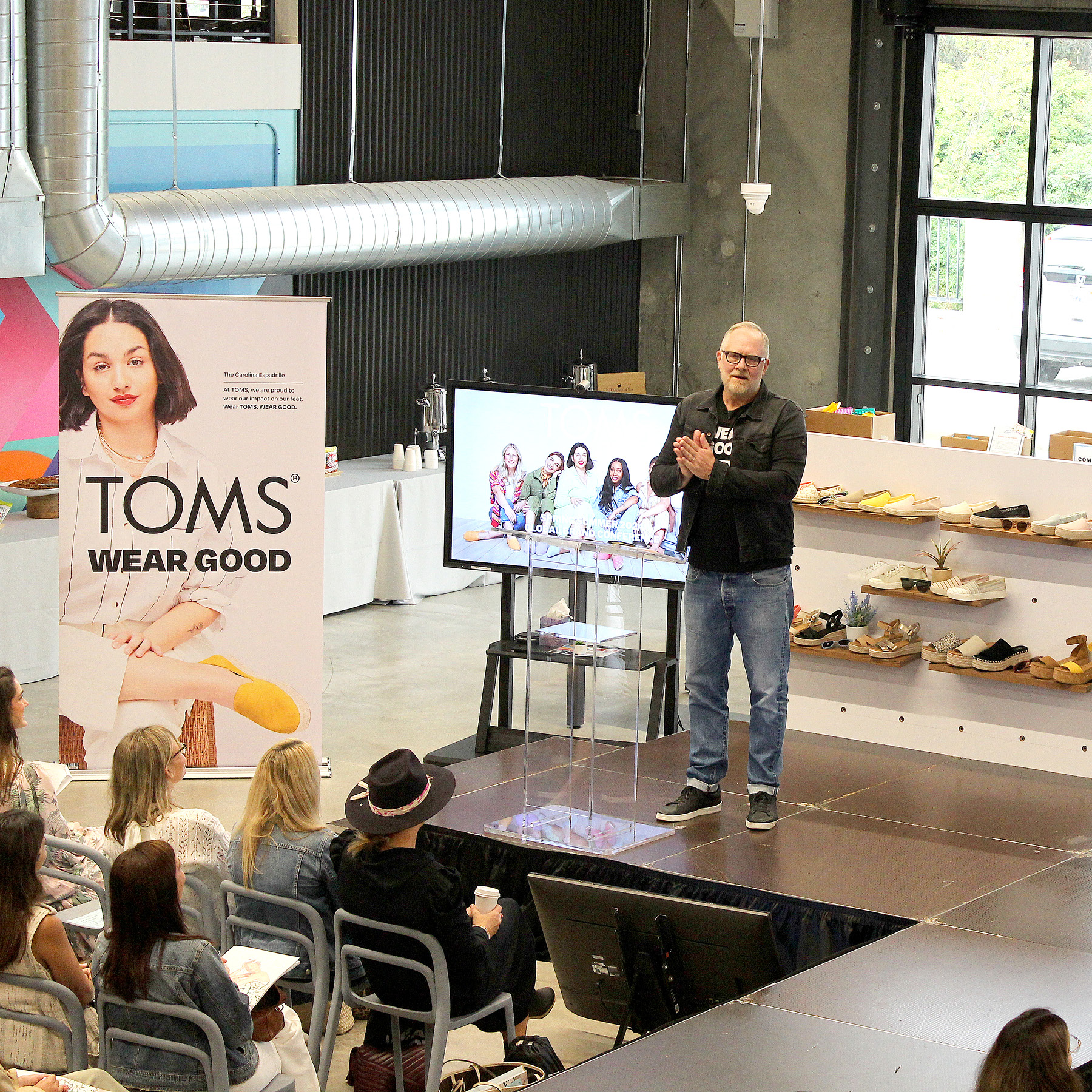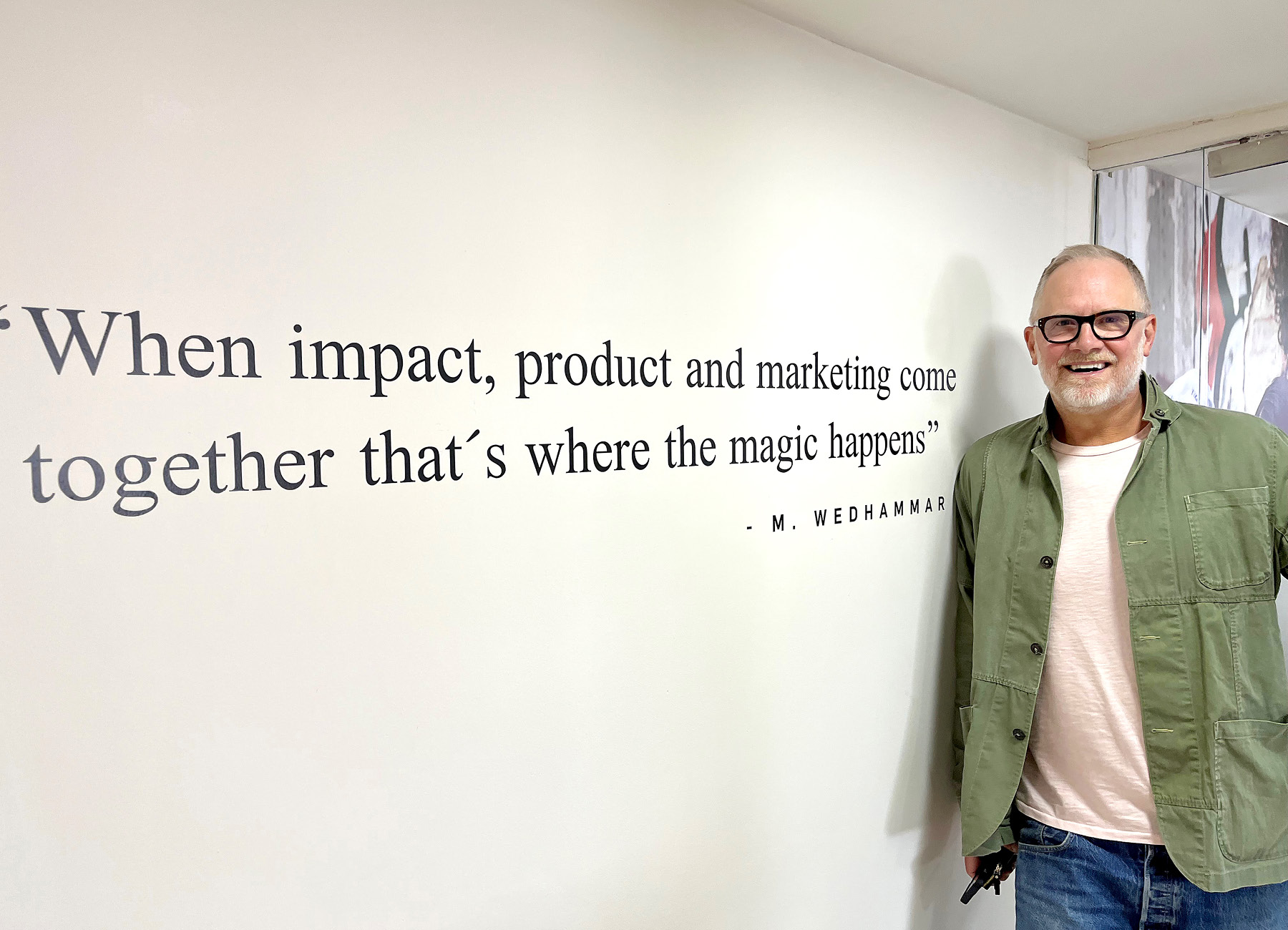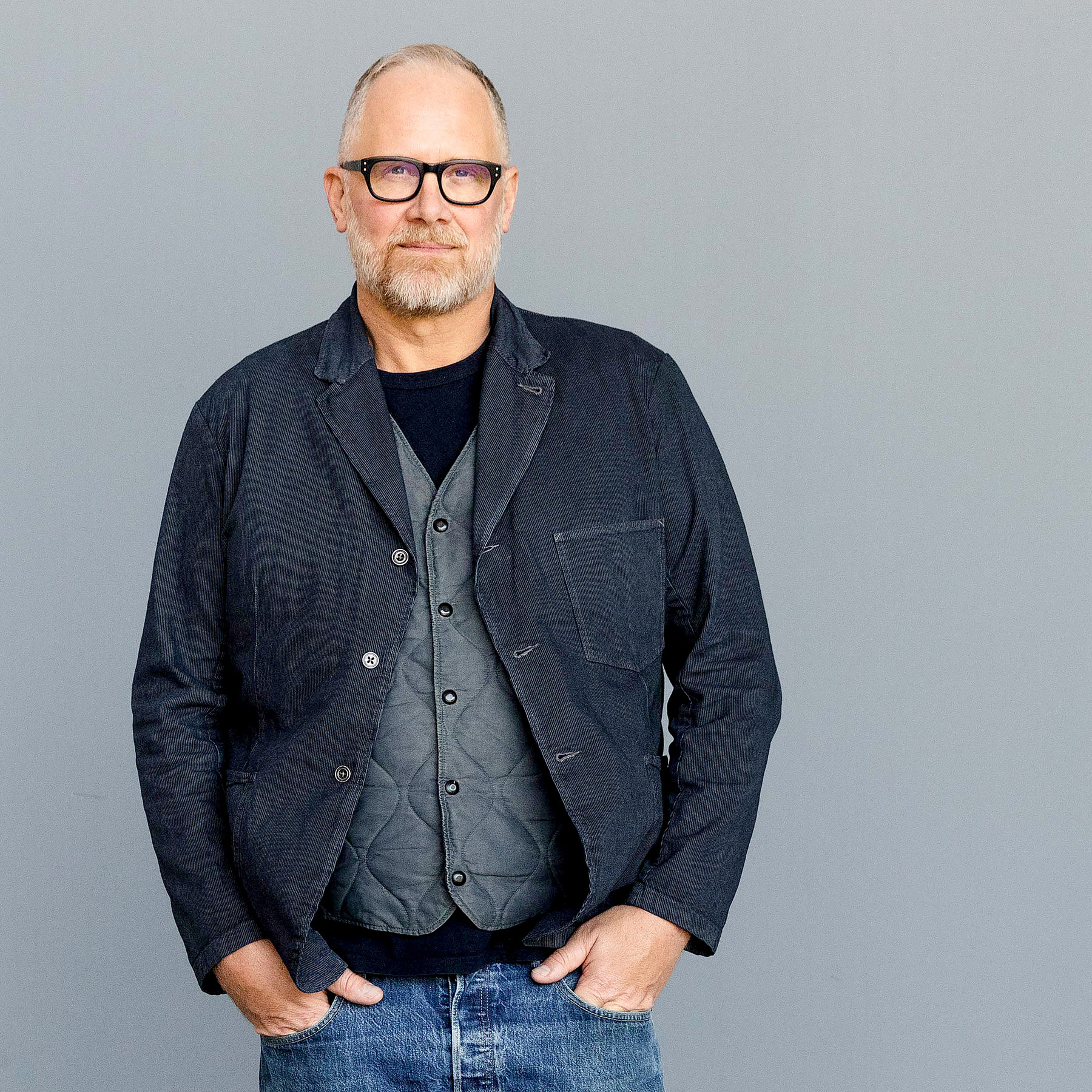Language
You can read the magazine in one of the following languages
Geolocation
You can read the global content or the content from your region


Had anyone asked, Magnus Wedhammar would have said that he followed TOMS Shoes with a competitive curiosity, natural for someone working with iconic footwear brands such as Nike and Converse.
Inwardly, however, he was a full-blown fan of the brand and everything it had accomplished.
“I’ve always watched TOMS closely from the sidelines,” he tells The CEO Magazine. “I was fascinated by how, in such a short period of time, the company was able to establish itself as a leading footwear brand, really introducing and pioneering a new business model that I found fascinating.”

The business model he is referring to is the One for One concept, where for each pair of shoes purchased, the company pledged another pair to the underprivileged. It was the simple premise TOMS Shoes was founded upon in 2006, and it struck a chord with consumers around the globe. By 2012, the brand was turning over US$229 million in revenue.
So when opportunity came knocking in 2020 to come on board as CEO, Wedhammar says he couldn’t have been more excited.
A lot had happened between the high profits of 2012 and Wedhammar’s arrival, however. In 2014, TOMS Shoes Founder Blake Mycoskie sold half his stake in the company to private investment firm Bain Capital and stepped away from the C-Suite.
For five years, the company struggled amid increasing competition in the market in terms of products and philanthropic model. In late 2019, the company was in the hands of creditors, who bought the company and committed to providing substantial debt relief and to injecting further funding into the business.
One of the first people the new owners called was Wedhammar.
Inspired by the task ahead of him, Wedhammar quickly set to work to reposition the brand, all while keeping the TOMS Shoes mission intact.
But the question was how to stay true to a brand promise of using business to improve lives, while evolving a giving model that, although wildly successful, had become, in his words, a “very cumbersome and costly endeavor”?

“It’s an incredible thing to have changed 100 million lives by giving them shoes,” he says. “But we had created an entire separate supply chain to support our giving efforts.”
To find the answer, Wedhammar turned to its most important stakeholder: its consumers.
“We asked them what they really cared about, what was important in their lives,” he explains. When the responses were tallied up, it turns out that giving shoes didn’t make the top 10. But there was a theme that kept appearing: mental health.
That’s how, in 2021, the first pages of TOMS Shoes, part two, were written. The brand announced that it was replacing its pioneering One for One model with something new – Wear Good – and that a third of all profits would be channeled toward grassroots good in the mental health space.
“Of course, there’s the play on words,” he says. “But it’s also an umbrella for our impact, our giving and all of the organizations that we work with,” he says.

Impact partners include Homeboy Industries, the largest gang rehabilitation and re-entry program in the world; The Dinner Party, a grief support community for 21-to-45 year olds; and Defy Ventures, a nonprofit that gives people with criminal histories a second chance.
Finding a tagline that could stand up to such an impactful statement as One for One wasn’t easy.
“I’d argue that it is as powerful as Nike’s ‘Just Do It’,” says Wedhammar. “When I first heard Wear Good, it was just one of those things, it clicked for me. And I truly believe it is as strong as One for One. It’s short enough to catch on and really resonates with the consumer.”
As part of Wedhammar’s commitment to operational excellence, he explains that TOMS Shoes strives to always be positioned at the forefront of technology and IT.
“This is a big part of any organization, and an expensive one, especially for independent companies,” he says. “We are constantly evaluating our tech stack and how we can best leverage the latest and greatest technology.”
Of course, AI is top of mind.
“I’d love to be at the forefront of AI because I see so many opportunities in business. The reality is that we might not be in a position today to lead efforts in AI, but we want to be fast followers,” he continues.
“We’re working closely with our IT partners such as Salesforce and SAP to take advantage of the research and the work they are doing there, especially in terms of optimizing inventory management, and flowing it the best way we can.”
And, as this new philanthropic model evolves, the new tagline will take on even more meaning in terms of product sustainability and product comfort.
“We’re in the early stages, but this is something that we’re going to keep season after season and year after year,” he says. “We really want TOMS to be synonymous with wearing good.”
Growing up in Sweden, Wedhammar’s passion was basketball. The professional career he dreamed of didn’t eventuate, but the sport did provide the opportunity to connect with Converse and Nike.
After 20 years with the Nike family (who acquired Converse in 2003), he moved to Wolverine Worldwide, leading the product team on the classic American boat shoe brand Sperry Topsiders, before joining Sanuk, a surfing brand under the Deckers Brands umbrella.
“There are a lot of CEOs out there with a lot of different backgrounds,” he explains. “Mine is product management – sales, marketing and merchandise.”
For someone who had built their career around managing product franchises, he says there was one aspect of the TOMS Shoes repositioning that was particularly appealing.


“Our core product icon, the Alpargata, was on the decline,” he explains. The task of re-energizing its signature espadrille was one he knew he would relish.
“We’ve spent the last couple of years iterating and extending our core, keeping the TOMS DNA but putting it on different silhouettes, heights and proportions to ensure that people still know they are looking at a TOMS shoe,” he explains. Along the way, he brought some of the best talent in the industry into his teams.
In mid-2021, the first in a series of new looks for the bestselling style was revealed. For its women’s range, the Mallow arrived, a shoe that combines Alpargata’s trademark canvas upper with a thick rubber sole and cushioned inserts. In its men’s range, the Rover was launched as a sneakerized version of the classic TOMS shoe, with a cushioned sole and pull tabs.

Wedhammar explains that all the hard work is starting to pay dividends. Because, in rejuvenating its iconic shoe, the brand has also built out a diversified product portfolio around it.
“We’ve had tremendous success in fashion sandals and with winter boots,” he says. So much so that both styles have now shot up to the top of its sales rankings. “Over the last couple of years, we’ve seen double-digit growth in both of these categories; last year in particular we had phenomenal sell-in.
“But by no means are we giving up on the Alpargata. I actually believe we are prime for a return of it.”
When he signed on the dotted line, Wedhammar was ready to hit the ground running, confident about the road ahead of him. Then came the curveball that wasn’t part of his, or anybody’s, job description – the COVID-19 pandemic.
“COVID-19 wasn’t in the brochure that was given to me in late 2019,” he laughs.
With the company’s wholesale order book slashed, Wedhammar acknowledges how grueling that first year was. “But we had a small and nimble team that was able to act quickly and work alongside our factory partners to reduce our order volume,” he says.
TOMS Shoes also made the decision to shut down all its brick-and-mortar stores and channel its focus into its online retail presence.

Just as the company was in a position to ramp up its orders again came the second blow: a supply chain disruption like Wedhammar says he had never seen before. “As an independent footwear company with fewer resources than some of the giants we compete against, it was extremely tough,” he says.
Along with manufacturing delays that impacted its inventory position, what was particularly challenging was the increase in freight costs.
“We were used to paying a couple of thousand dollars for a container and, before we knew it, we were paying close to US$20,000,” he explains. “That had a massive impact not only on our bottom line, but on how we did business.”
TOMS Shoes was able to navigate these choppy waters by quick thinking and an aggressive clear out of excess inventory. And, Wedhammar says, the TOMS Shoes that has emerged from this period is leaner and more strategic.
“We manage inventory more strategically as a result of what we went through with the supply chain crisis,” he says.
What makes his efforts of the last three years all the more rewarding is that Wedhammar has driven groundbreaking change, all while knowing he had little room for error.
“You can make a lot of mistakes if you are part of a big corporation with unlimited cash,” he explains. “But when you don’t have an iconic product that is growing double digits every year, it becomes incredibly important to manage operations, especially inventory.”
Another outcome of the pandemic years at TOMS Shoes was the decision to downsize its office footprint and create a more hybrid work environment. It’s a structure that is here to stay, for a few reasons.
“We feel like we can access top talent around the world versus just looking at one part of the world,” Wedhammar explains. “Now we have product people in key markets, whether that’s in Los Angeles, New York, Amsterdam or London, and we’re also closer to the ground and to the consumer. We’re seeing trends earlier.”
Wedhammar explains TOMS Shoes leads with trust.
“We believe that people will do a great job no matter where they are. And I don’t care if they work in the middle of the night or in the morning, just as long as the work gets done and that they can work within a team.
“I think we’re a much stronger organization as a result.”
He has instilled a laser focus on delivering operational excellence, particularly around inventory management, to ensure the brand doesn’t end up out of stock halfway through the season, or with too much at the end of the season.
This focus was put to the test when, late last year, the company made the decision to move its warehouse from Mira Loma, California to Texas.
“That can be a disastrous endeavor if you do it wrong,” he says.

Instead, two million pairs of shoes were shifted across borders without any disruption, in large part thanks to the clear channels of communication the operations team kept open with all the partners involved.
For Wedhammar, honesty and over-communication are what he calls his secret sauces in business, whether with his team or key partners, such as marketing platform Listrak, logistics software Cart.com, footwear manufacturer Waffle Shoes or brand agency Nemo.
“Clearly communicating your goals, your strategy and your intentions is so important,” he explains. “It leaves no room for misunderstanding.”
But all conversations need to go two ways, he cautions.
“Ask the right questions to really understand some of the pain points that your partners have. When you do, the partnerships become stronger and more productive,” he says. “It builds long-term relationships. As a smaller business, relationships become everything.”

It’s an approach he cultivates internally as well, and it proved particularly valuable as the business negotiated a challenging time in its still-young history.
“Breaking down barriers, being honest with where we are, over-communicating and working as a team have been a successful formula for us,” he says.
He is actively encouraging a culture where it’s OK to respectfully disagree with the CEO. “Good ideas can come from anybody,” he says.
“When you’re a small company like us, you’ve got to make sure that you are utilizing the brain power of the entire organization and not just surrounding yourself with people that you want to hear.”
Because not hearing reality is one of Wedhammar’s pet peeves. “I get agitated when I feel people are telling me what I want to hear,” he says.
“And I perk up when they say they disagree. That’s when I really listen, because I’m wrong most of the time.”

Similarly, he is also integrating an obsession with the customer into the TOMS Shoes culture.
“It’s about understanding, not misunderstanding your customer,” he explains. “It’s crucial to be on the ground watching and picking up consumer behaviors rather than getting information secondhand.”
In other words, meeting the customer where they are, rather than relying on research compiled by third-party companies.
“The consumer will never tell you what to do next, but they will give you clues about what is going on right now,” he continues. “It’s our job to take those clues and figure out where to go next.”
What is certain is that Wedhammar is exactly where he wants to be. “I’ve spent 28 years of my life in this industry, and what still drives me to this day is seeing people wearing your product with pride,” he says.
“Seeing a product that I know teams have worked hard on come to life, whether that’s in a website, in a story or on the street, that’s still what gets me really excited and keeps me going.”